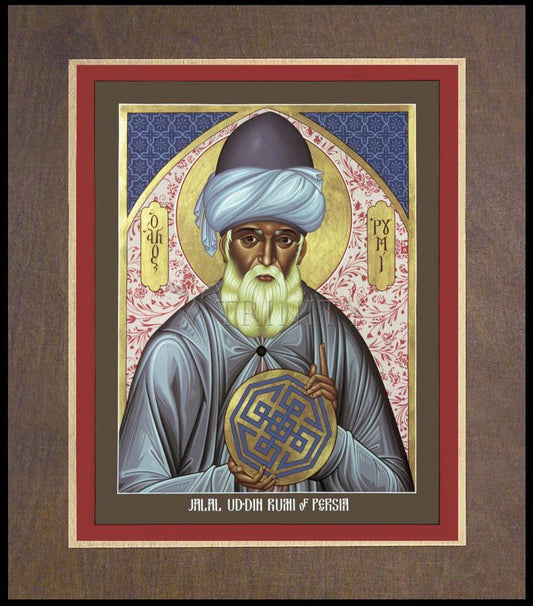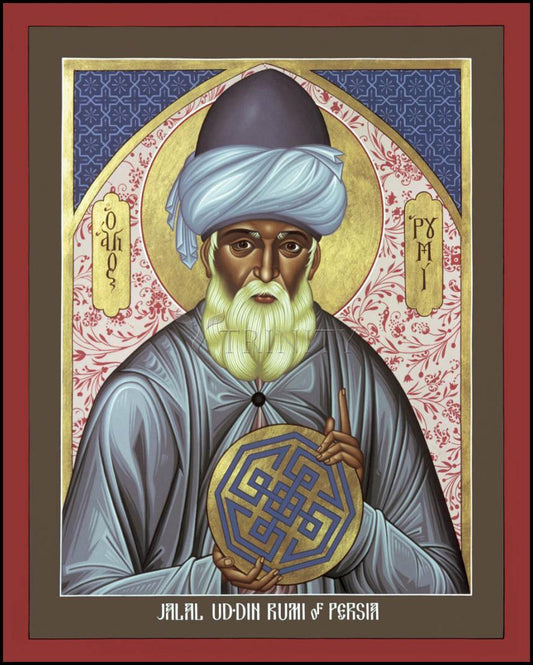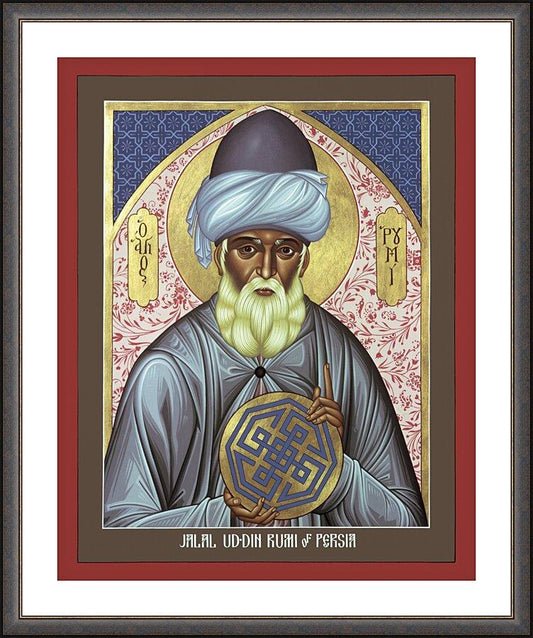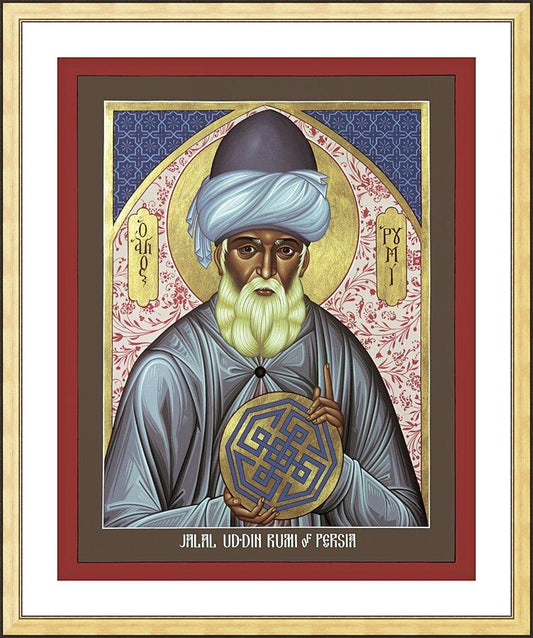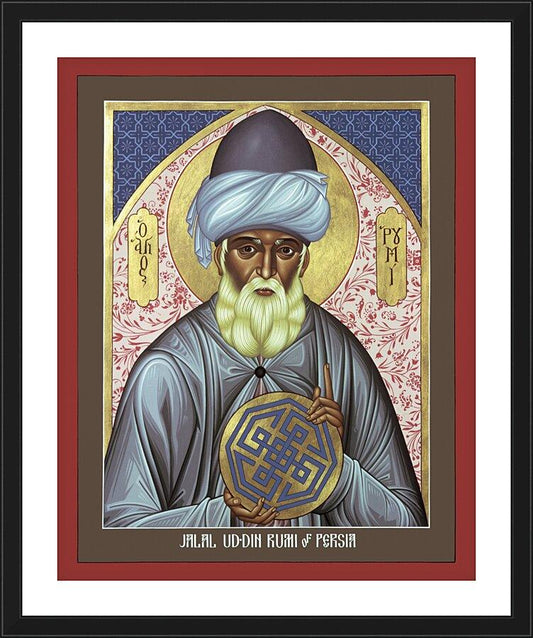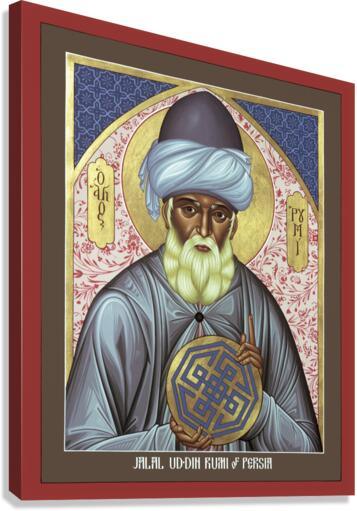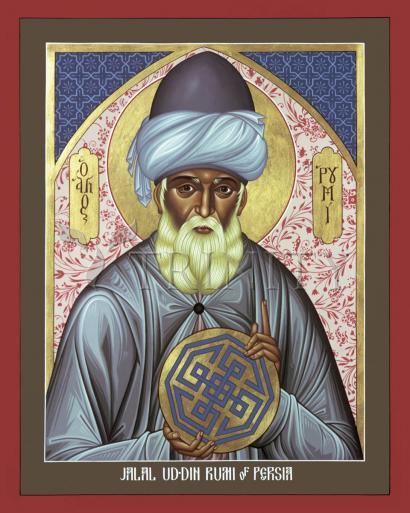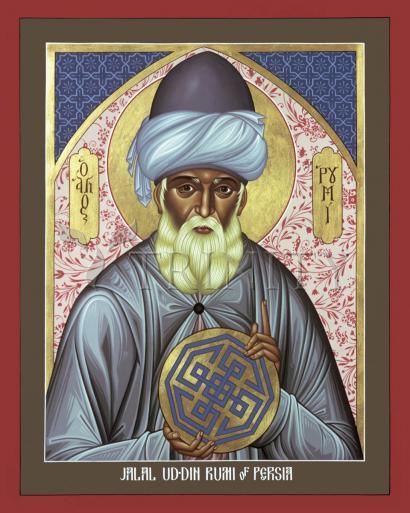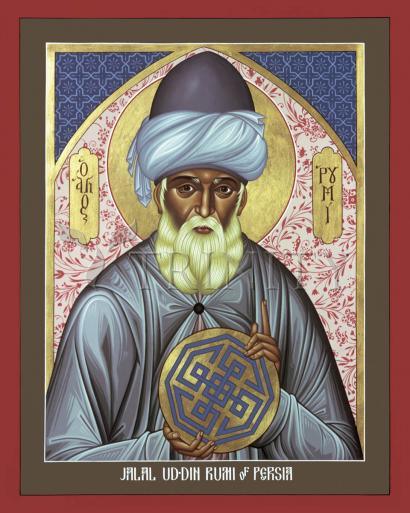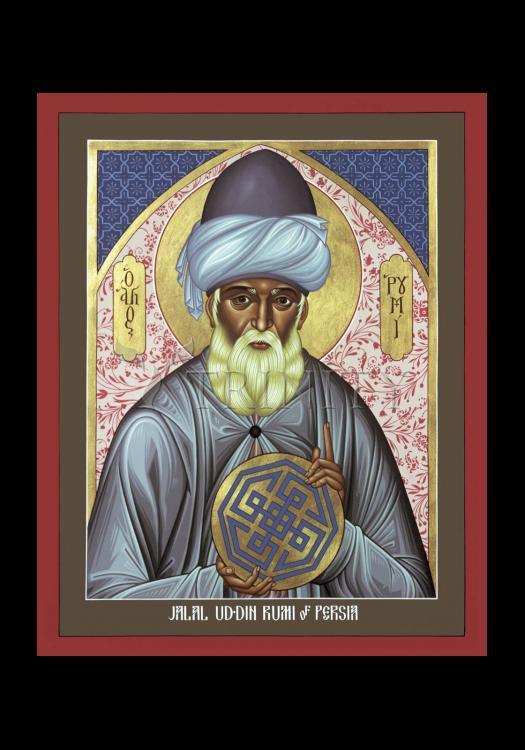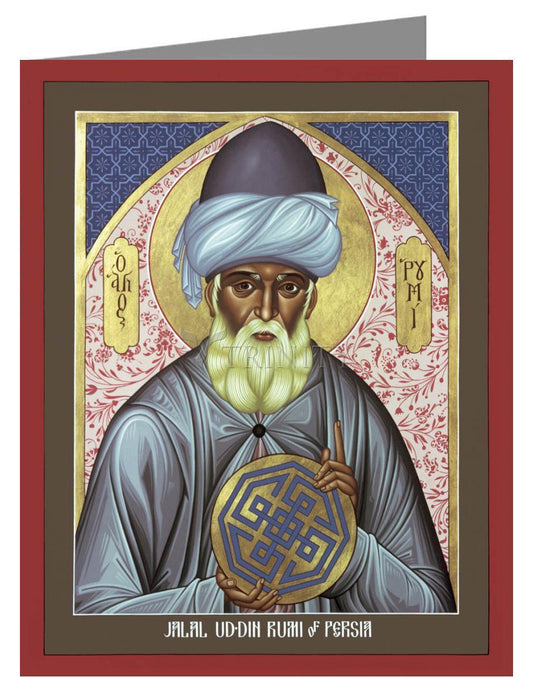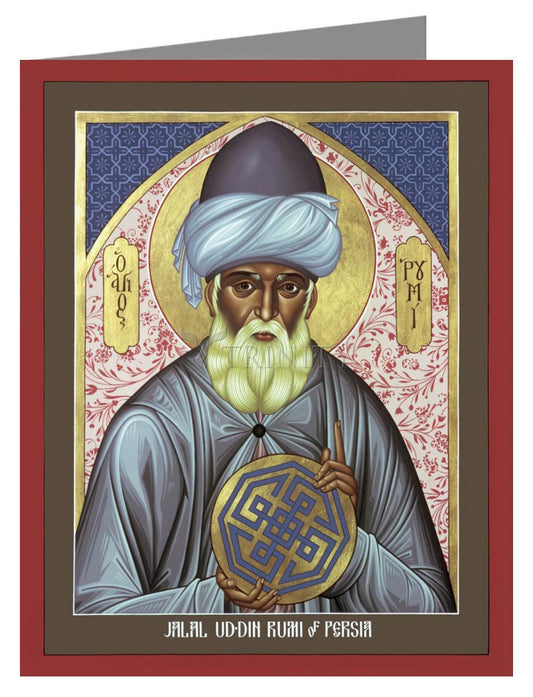The name Mevlana Jalaluddin Rumi stands for Love and ecstatic flight into the infinite. Mevlana is one of the great spiritual masters and poetical geniuses of mankind and was the founder of the Mevlevi Sufi order, a leading mystical brotherhood of Islam.
Rumi was born in Balkh (Afghanistan) in 1207 to a family of learned theologians. Escaping the Mongol invasion, Rumi and his family travelled extensively in the Muslim lands, performed the pilgrimage to Mecca and finally settled in Konya, Anatolia (Turkey), where he succeeded his father in 1231 as professor in religious sciences.
He was introduced into the mystical path by a wandering dervish, Shamsuddin of Tabriz. His love and his bereavement for the death of Shams found their expression in a surge of music, dance and lyric poems, `Divani Samsi Tabrizzi'. Rumi is the author of a huge didactic work, The `Mathnawi', and discourses, `Fihi ma Fihi', written to introduce his disciples to metaphysics. If there is `Fihi ma Fihi', written to introduce his disciples to metaphysics. If there is any general idea underlying Rumi's poetry, it is the absolute love of God. His influence on thought, literature and all forms of aesthetic expression in the world of Islam cannot be overrated.
Mevlana Jalaluddin Rumi died on December 17, 1273. Men of five faiths followed his bier. That night was named Sebul Arus (Night of Union). Ever since, the Mevlevi dervishes have kept that date as a festival.
The Mevlevi rites symbolize divine love and mystical ecstasy; they aim at union with the Divine. The music and the dance are designed to induce meditation on the love of God. Mevlevi music contains some of the most valuable elements of Turkish classical music. It serves mainly as accompaniment for poems of Rumi and other Sufi poets. The music of the sema (ceremony) is generally conducted by the chief drummer. Percussion accompaniment is supplied by the kudums (small kettledrums) and cymbals; melody is provided by the ney (reed flute), the string instruments and the voice. The words and even syllables of the poetry are connected to the musical sentences. Dervish music cannot be written in notes. Notes do not include the soul of the dervish.
The dervishes turn timelessly and effortlessly. They whirl, turning round on their own axis and moving also in orbit. The right hand is turned up towards heaven to receive God's overflowing mercy which passes through the heart and is transmitted to earth with the down turned left hand. While one foot remains firmly on the ground, the other crosses it and propels the dancer round. The rising and falling of the right foot is kept constant by the inner rhythmic repetition of the name of "Allah-Al-lah, Al-lah..." The ceremony can be seen as a great crescendo in three stages: knowing God, seeing God and uniting with God.
The Ceremony
The steps of the way to union with the Divine are performed according to strict rules. Within a circle the sheikh stands at the "post." It is the highest spiritual position, marked by a red rug indicating the direction of Mecca. Red is the color of union and of the manifested world. There are 24 colors of union and of the manifested world. The musicians' platform faces the sheikh; the whirling dervishes take their places to his left.
The N'aat, a poem of praise to the Prophet, opens the ceremony. It is followed by a recitation from the Qur'an. The kudums (drums) then break the silence to introduce the flute solo that conveys the yearning for the union with God. The next step is the Sultan Veled Walk when the dervishes, following the sheikh, circle the hall three times, stopping to bow to each other at the "post."
The first selam (salutation) introduces the dance: by kissing the hand of the sheikh, the dervish obtains his permission to whirl. The master of the dance directs him to his position: As the musicians play and the chorus chants, the sheikh stands at the "post" and the dervishes unfold and turn repeating their inaudible "Allah, Allah, Allah"" This part of the ceremony lasts approximately ten minutes and is repeated four times. At the fourth selam the sheikh joins the whirling. He represents the center (the sun); the dervishes represent the orbiting planets turning around him and around themselves in the solar system of Mevlana Jalaluddin Rumi.
The Ceremony is concluded by the recitation of the Fatiha; the opening. The Ceremony is concluded by the recitation of the Fatiha, the opening chapter of the Qur'an, followed by a prayer to Mevlana and Shamsuddin of Tabriz. Then all the dervishes join in sounding the "Hu" which is the all-embracing Name of God, the One.
"Excerpts from "Reflections of Rumi" by the Haqqani Foundation of America



